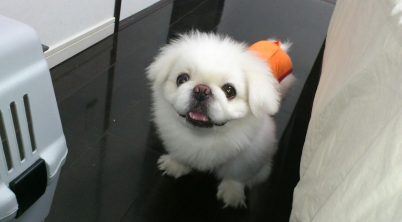The Pekingese is an old dog breed from China and was pals with emperors. They have short legs because of a gene issue called chondrodysplasia or achondroplasia, which causes dwarfism. This trait, easily observed in the breed’s compact stature and unique gait, has been fostered over generations, originally for the breed’s role as a lapdog for nobility. Some little dogs are little because of different things. But for the Pekingese, being little is just a thing for this type of dog. It has been a normal thing for some time now.
Dwarfism in the animal kingdom, and specifically in dog breeds, can have multiple manifestations, but it is often associated with certain health challenges. In Pekingese, the condition is not linked to a deficiency in growth hormones but rather to selective breeding practices that have emphasized certain physical characteristics. Although dwarfism is often perceived as merely a cosmetic difference, it is important for potential owners and breeders to be aware of the implications it may have on the dog’s overall health and wellbeing as they may be prone to specific medical issues due to their distinctive physical structure.
Responsible breeding practices and attentive canine care are crucial for dogs with dwarfism. Pekingese pet parents should watch for signs of health problems that can come with the breed’s small size, like breathing issues, crowded teeth, and skin fold skin irritation, which might need medical care. Prioritizing the health and quality of life of Pekingese dogs ensures that these animals continue to thrive as cherished companions, just as they have throughout their storied history.
Table of Contents
Pekingese Dwarfism
The Pekingese kind has special looks, like being small and having a different face. One thing affecting this kind is a problem called chondrodysplasia, also known as dwarfism. This trait is marked by having short and curved legs, because the tissue that makes cartilage grows weirdly.
Characteristics
- short legs: The legs of a short Pekingese dog are much shorter than regular ones.
- curved bones: The illness usually bends the bones, making them different from the usual straight bones.
- Solid body: Even though they are small, Pekingese dogs with the illness have a dense body.
Genetic Implications
Dwarfism can be passed down in families. Think carefully about how dogs are bred to prevent health problems. Pekingese dogs have flat faces and short noses, which can come with dwarfism.
Health Considerations
Small Pekingese dogs can have many health issues. Their bones are not normal, so they can have joint problems like osteoarthritis. It’s essential that they receive regular check-ups with a veterinarian to manage potential health issues.
Care Tips
- Nutrition: A balanced diet is crucial to maintain their health and prevent obesity, which can exacerbate joint problems.
- Exercise: Due to their physical limitations, Pekingese with dwarfism should engage in gentle exercise to keep them active without putting undue strain on their joints.
It’s important for owners to understand the implications of dwarfism in Pekingese dogs and provide appropriate care to ensure their quality of life.
Physical Characteristics
The Pekingese is a toy dog breed, often referred to as the “lion dog” due to its impressive mane of fur resembling that of a lion. With a distinctly bold and confident appearance, the breed boasts a variety of coat colors, including red, tan, white, gold, sable, cream, black, and blue. The texture of their fur ranges from straight to slightly wavy, contributing to their regal posture.
Facial Features:
- Eyes: Large and dark, imparting an expression of boldness.
- Ears: The breed’s ears are heart-shaped, long, with heavy feathering, and lay flat against their head, adding to their characteristic look.
Body Structure:
- Legs: Small and slightly bent. This comes from a kind of shortness that changes how bones grow, achondroplasia or chondrodysplasia.
- Dwarfism Genes: The FGF4 retrogene is associated with their short limb characteristics.
The peculiar physical structure with distinct physical characteristics, such as their shortened legs, is an essential aspect of what gives Pekingese their unique silhouette. While small size in Pekingese dogs is normal for their breed, it’s important to tell the difference between natural traits and any health problems linked to being small because of genes.
Genetics and Breeding
In Pekingese dogs, genes are very important for how they look and are. How dogs are bred also spreads these traits in the breed.
Understanding Dwarfism
Dwarfism in Pekingese is often the result of a genetic mutation known as chondrodysplasia, which is characterized by shortened limbs due to altered growth plate development. The reason for this condition is a genetic change on dog chromosome 18, known as an FGF4 retrogene insertion. This change causes dwarfism. This manifests in the breed as short legs with a curved appearance. Also, there are other kinds of shortness like achondroplasia and osteochondrodysplasia that can happen, but these are not as usual in the breed.
Dwarfism, like pituitary type, has a lack of hormones making growth slow. Dwarfism, with hormones lacking, makes growth slow. However, pituitary dwarfism is not as commonly seen in the Pekingese as it is in other breeds.
Reproductive Challenges
Raising small dogs with genetic flaws, like if they have the FGF4 retrogene, can be rather difficult. People taking care of them should be very careful about health troubles that might come up.
Careful selection in breeding is essential to maintain the breed’s characteristics while also considering the health of the progeny. Breeders can use genetic testing to identify carriers of specific mutations and make informed decisions to minimize the risk of passing on severe forms of dwarfism that could result in significant health problems. It is the responsibility of breeders to ensure that while preserving breed traits, they also prioritize the health and vitality of the Pekingese through ethical breeding practices.
Health and Care
Dwarfism-Related Health Concerns
Puppies from Pekingese dogs sometimes show dwarf illness. It can make parts of their body look unusual, like having short legs and big eyes. These marks are linked to some health problems such as back issues (IVDD) and breathing problems.
Intervertebral Disc Disease
Bad back is common. Disks that cushion spine get hurt. This can lead to pain, nerve damage, and even paralysis. Owners should be observant for signs of pain or discomfort in their Pekingese, as early intervention is crucial for managing IVDD.
Brachycephalic Syndrome
The Pekingese dog kind, known for its “flat” face, has a risk of brachycephalic syndrome. This condition can cause breathing difficulties due to the shape of the skull. To alleviate potential respiratory issues, avoid strenuous exercise and ensure the Pekingese has a cool and comfortable environment.
Exercise and Diet
Exercise should be moderate to prevent stress on their compact skeletal structure. Also, eating healthy food is important for staying healthy. It helps your dog’s body be strong and well. A diet rich in protein, with appropriate portions of fruits and vegetables, supports their well-being.
Grooming Requirements
Regular grooming is essential to manage the Pekingese’s shedding and maintain their long coat. Brushing several times per week helps prevent matting and keeps their coat in good condition. Given the breed is high maintenance in terms of grooming, owners should allocate time for this activity.
Addressing Health Problems
Skilled animal doctor help may be needed, especially if back problem gets worse or if short-nosed animal syndrome needs surgery for better breathing. Regular checks can find and control these health issues before they get worse.
Behavior and Temperament
The Pekingese is a small dog that exhibits a surprisingly assertive and independent character. Despite its diminutive stature, this breed is known for having a bold and confident approach to life. They can be somewhat stubborn in nature, which can be a factor in their behavior and training. Pekingese owners often describe their pets as possessing a dignified air, consistent with the breed’s historical association as the royal dogs of ancient China.
In terms of family dynamics, the Pekingese is typically loyal to its owners, evincing a strong bond to their human family members. However, they can be aloof with strangers. While their temperament makes them a decent family dog, their interactions with children need supervision. Because they are small and may act aggressively, it’s best to watch when dogs are around little kids to keep them both safe.
Pekingese behavior is heavily influenced by the way they are raised and trained. Consistent and patient training is key to managing their independent streak. The breed responds well to respectful, positive reinforcement methods that take into account their self-esteem and sense of importance. An understanding of their need for respect and the provision of firm but gentle guidance can lead to a harmonious relationship.








